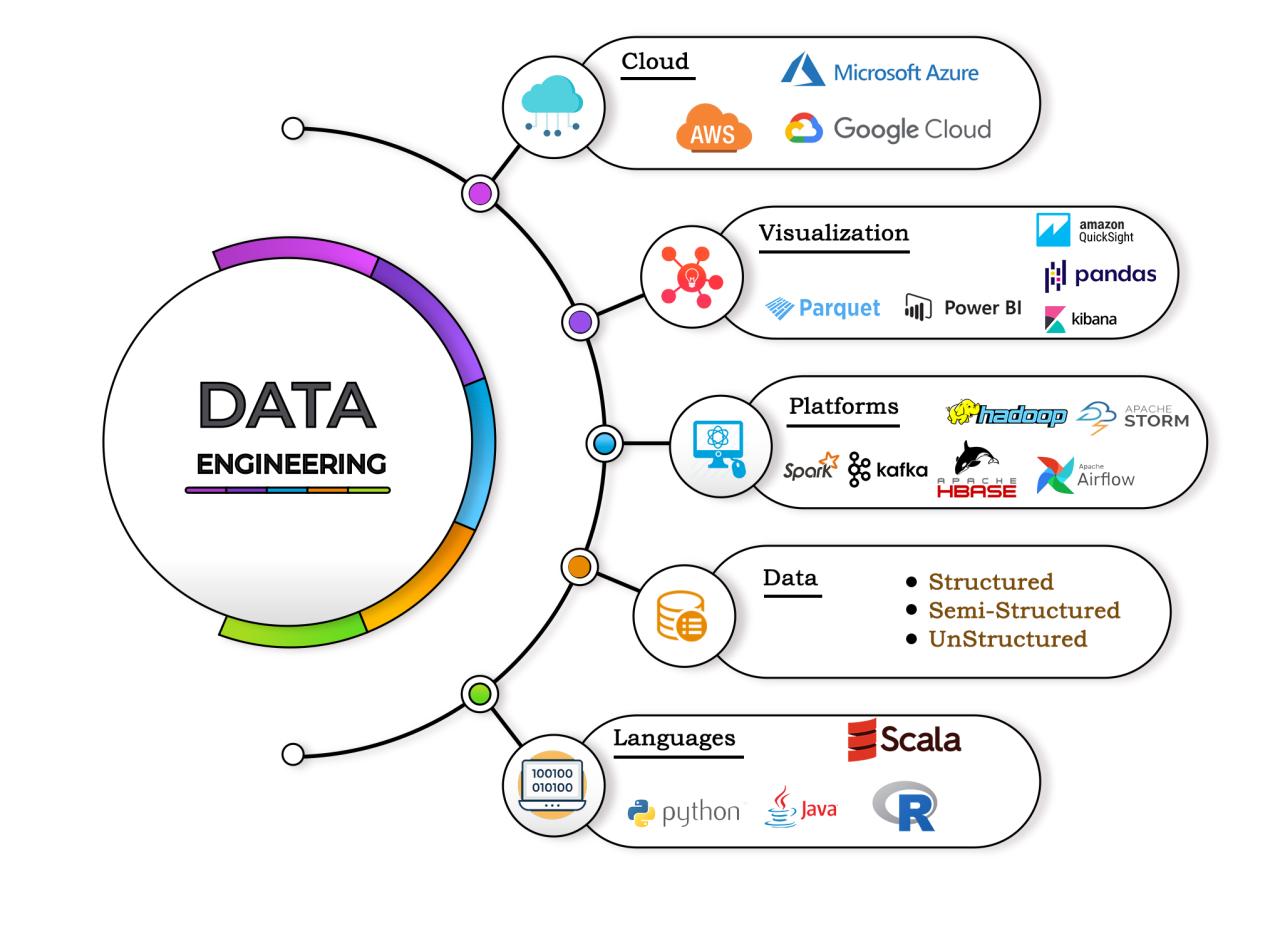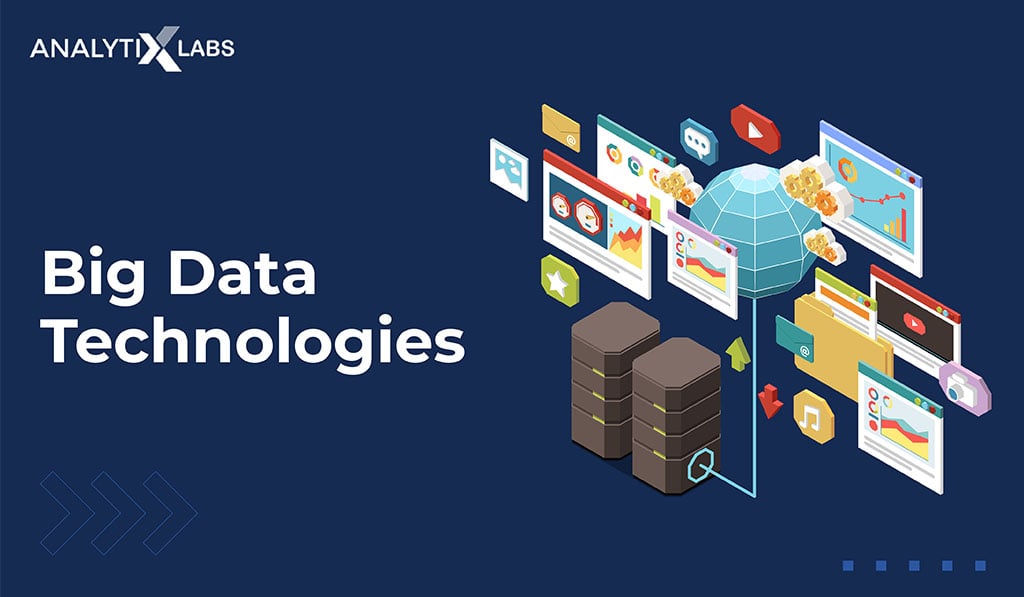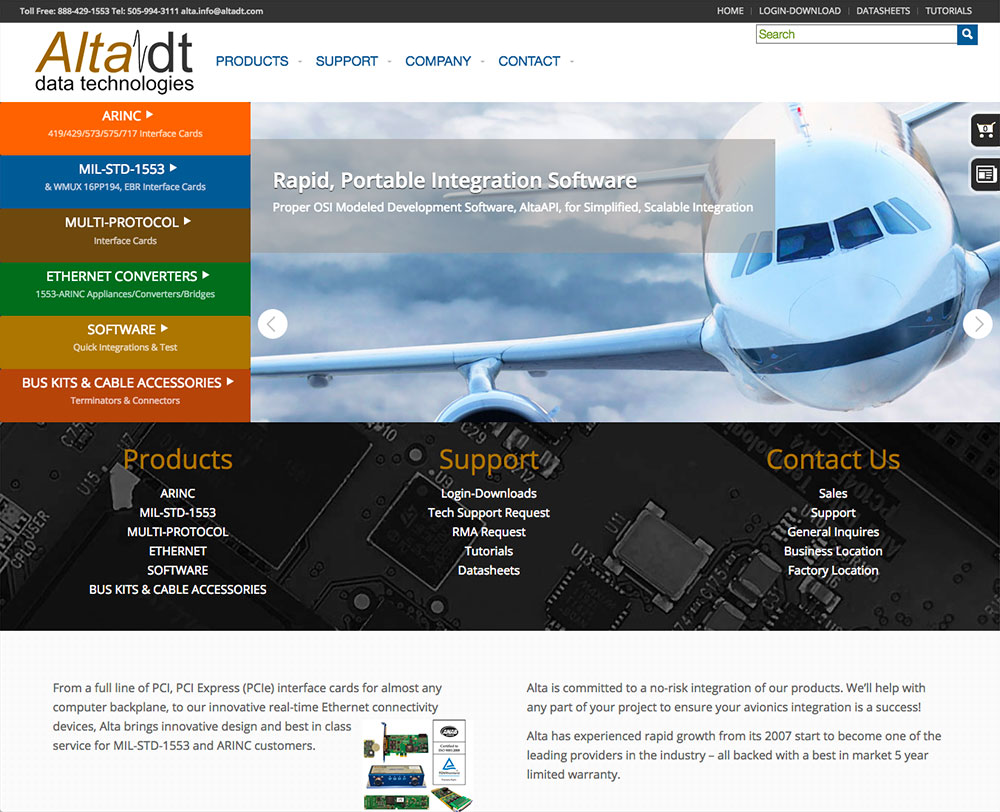Data Technology Solutions: Powering Innovation
Data technology solutions are revolutionizing how businesses operate, analyze information, and make informed decisions. These solutions, encompassing everything from data storage and analytics to visualization and security, are transforming industries […]

Data technology solutions are revolutionizing how businesses operate, analyze information, and make informed decisions. These solutions, encompassing everything from data storage and analytics to visualization and security, are transforming industries across the globe.
From streamlining operations and improving customer experiences to uncovering hidden insights and driving innovation, data technology solutions are empowering organizations to achieve their strategic goals and thrive in the digital age.
Introduction to Data Technology Solutions
Data technology solutions are the tools and strategies used to collect, process, analyze, and interpret data to gain insights and make informed decisions. These solutions are essential in today’s data-driven world, where organizations are constantly striving to make sense of the vast amounts of information they generate and collect.
Data technology solutions are not limited to a single industry or function; they are widely applicable across various sectors, enabling businesses to improve their operations, enhance customer experiences, and gain a competitive edge.
Examples of Data Technology Solutions
Data technology solutions are employed across various industries, with specific applications tailored to each sector’s unique needs. Here are some examples:
- Retail: Recommender systems, personalized marketing campaigns, and inventory management based on customer data.
- Healthcare: Predictive analytics for disease diagnosis, personalized treatment plans, and efficient resource allocation.
- Finance: Fraud detection, risk assessment, and investment portfolio optimization.
- Manufacturing: Predictive maintenance, supply chain optimization, and quality control.
Challenges Addressed by Data Technology Solutions
Data technology solutions address a range of challenges faced by organizations in today’s data-driven world. These challenges include:
- Data Volume and Complexity: Organizations face an increasing volume and complexity of data, making it difficult to manage, process, and analyze efficiently.
- Data Silos: Data is often scattered across different systems and departments, making it challenging to gain a comprehensive view and derive insights.
- Data Quality: Ensuring data accuracy and consistency is crucial for reliable analysis and decision-making.
- Data Security: Protecting sensitive data from unauthorized access and cyber threats is paramount.
- Data Governance: Establishing clear policies and procedures for data management, access, and usage is essential for compliance and ethical considerations.
Types of Data Technology Solutions

Data technology solutions are a wide array of tools and services that help organizations collect, store, analyze, and visualize data to gain insights and make better decisions. These solutions are essential for businesses in today’s data-driven world, allowing them to understand customer behavior, optimize operations, and stay ahead of the competition.
Data Storage Solutions
Data storage solutions are fundamental to any data technology strategy. They provide the foundation for collecting, organizing, and preserving data for future use.
Data storage solutions are categorized into different types, each offering distinct features and benefits:
- Relational Databases (RDBMS): These databases store data in structured tables with relationships between them. They are ideal for managing transactional data, such as customer orders, financial records, and inventory management. Popular examples include MySQL, PostgreSQL, and Oracle Database.
- NoSQL Databases: These databases provide a more flexible approach to data storage, allowing for unstructured and semi-structured data. They are suitable for handling large volumes of data, such as social media posts, sensor data, and user profiles. Examples include MongoDB, Cassandra, and Redis.
- Cloud Storage: Cloud storage services offer scalable and cost-effective data storage solutions. They provide access to data from anywhere, making it ideal for businesses with remote teams or geographically dispersed data. Popular cloud storage providers include Amazon S3, Google Cloud Storage, and Azure Blob Storage.
- Data Warehouses: Data warehouses are designed for storing large volumes of historical data from various sources. They are used for analytical purposes, such as trend analysis, reporting, and business intelligence. Examples include Snowflake, Amazon Redshift, and Google BigQuery.
- Data Lakes: Data lakes are repositories for storing raw data in its native format, without any predefined schema. They are suitable for storing a wide variety of data types, including structured, semi-structured, and unstructured data. Examples include Amazon S3, Azure Data Lake Storage, and Google Cloud Storage.
Data Analytics Solutions
Data analytics solutions help organizations extract meaningful insights from their data. These solutions use various techniques and algorithms to analyze data, identify patterns, and generate reports.
Data analytics solutions can be broadly classified into:
- Descriptive Analytics: This type of analytics focuses on understanding past events and providing insights into what happened. It involves summarizing data and identifying trends. Examples include creating dashboards, generating reports, and analyzing customer demographics.
- Diagnostic Analytics: Diagnostic analytics goes beyond simply describing data and aims to understand why something happened. It involves identifying the root causes of events and patterns. Examples include analyzing customer churn, identifying fraud, and investigating performance issues.
- Predictive Analytics: Predictive analytics focuses on forecasting future outcomes based on historical data and patterns. It uses statistical models and machine learning algorithms to predict future trends and events. Examples include predicting customer behavior, forecasting sales, and identifying potential risks.
- Prescriptive Analytics: Prescriptive analytics takes predictive analytics a step further by providing recommendations and actions to optimize outcomes. It uses optimization algorithms and machine learning models to suggest the best course of action. Examples include recommending pricing strategies, optimizing marketing campaigns, and automating business processes.
Data Visualization Solutions
Data visualization solutions help organizations present data in an easily understandable and engaging way. These solutions use charts, graphs, and other visual representations to make data more accessible and insightful.
Data visualization solutions are used for various purposes, including:
- Business Intelligence (BI): BI dashboards and reports use data visualization to provide insights into business performance, customer behavior, and market trends. Examples include Tableau, Power BI, and Qlik Sense.
- Data Exploration: Data visualization tools can help analysts explore and understand large datasets, identify patterns, and discover insights. Examples include D3.js, Plotly, and Bokeh.
- Data Storytelling: Data visualization can be used to create compelling narratives around data, making it more engaging and impactful. Examples include infographics, interactive maps, and animated charts.
Data Security Solutions
Data security solutions are essential for protecting sensitive data from unauthorized access, use, disclosure, disruption, modification, or destruction. These solutions help organizations comply with data privacy regulations and ensure the confidentiality, integrity, and availability of their data.
Data security solutions include:
- Data Encryption: Data encryption converts data into an unreadable format, making it secure even if it falls into the wrong hands. Examples include AES encryption, RSA encryption, and SSL/TLS encryption.
- Access Control: Access control mechanisms restrict access to data based on user roles and permissions. This ensures that only authorized individuals can access sensitive information. Examples include role-based access control (RBAC) and attribute-based access control (ABAC).
- Data Masking: Data masking replaces sensitive data with non-sensitive values, allowing for data sharing without compromising security. This is often used for testing and development environments.
- Data Loss Prevention (DLP): DLP solutions monitor data flows and prevent sensitive data from leaving the organization’s network. They can detect and block data leaks, unauthorized data transfers, and other security threats.
- Data Governance: Data governance establishes policies and procedures for managing data security, privacy, and compliance. It ensures that data is used ethically and responsibly.
Data Technology Solutions: A Comparative Table
| Type of Solution | Functionality | Key Features | Popular Providers |
|---|---|---|---|
| Data Storage | Storing and managing data | Scalability, reliability, security, data integrity | Amazon S3, Google Cloud Storage, Azure Blob Storage, MySQL, PostgreSQL, MongoDB, Cassandra, Redis |
| Data Analytics | Analyzing data to gain insights | Data mining, statistical modeling, machine learning, predictive analytics | Tableau, Power BI, Qlik Sense, R, Python, SAS |
| Data Visualization | Presenting data in a visual format | Interactive charts, dashboards, infographics, data storytelling | Tableau, Power BI, Qlik Sense, D3.js, Plotly, Bokeh |
| Data Security | Protecting data from unauthorized access | Encryption, access control, data masking, data loss prevention, data governance | Microsoft Azure Security Center, AWS Security Hub, Google Cloud Security Command Center, Symantec Endpoint Protection, McAfee Enterprise Security |
Benefits of Implementing Data Technology Solutions
In today’s competitive business landscape, organizations are increasingly relying on data technology solutions to gain a competitive edge. By harnessing the power of data, businesses can optimize operations, make informed decisions, and enhance customer experiences. Implementing data technology solutions offers a wide range of tangible and intangible benefits that can significantly impact an organization’s success.
Tangible Benefits
The tangible benefits of implementing data technology solutions are often quantifiable and directly impact an organization’s bottom line. These benefits can be measured in terms of increased efficiency, reduced costs, and improved revenue.
- Increased Efficiency: Data technology solutions can automate repetitive tasks, streamline processes, and optimize workflows, leading to increased efficiency and productivity. For example, a manufacturing company can use data analytics to predict machine failures and schedule maintenance proactively, minimizing downtime and maximizing production output.
- Reduced Costs: By automating tasks, identifying inefficiencies, and optimizing resource allocation, data technology solutions can help businesses reduce operational costs. For example, a retail company can use data analytics to optimize inventory management, reducing storage costs and minimizing stockouts.
- Improved Revenue: Data technology solutions can help businesses identify new revenue streams, target customers more effectively, and personalize marketing campaigns, leading to increased sales and revenue. For example, an e-commerce company can use data analytics to understand customer preferences and recommend products, increasing sales and customer satisfaction.
Intangible Benefits
While tangible benefits are readily quantifiable, intangible benefits are often more difficult to measure but equally important for long-term success. These benefits can enhance an organization’s competitiveness, customer relationships, and overall value proposition.
- Enhanced Decision-Making: Data technology solutions provide businesses with real-time insights and data-driven intelligence, enabling more informed and strategic decision-making. For example, a financial institution can use data analytics to assess risk and make better lending decisions.
- Improved Customer Experience: Data technology solutions can help businesses understand customer needs, preferences, and behaviors, enabling them to personalize products and services and deliver a more satisfying customer experience. For example, a telecommunications company can use data analytics to identify customer churn risk and implement targeted retention strategies.
- Competitive Advantage: By leveraging data technology solutions, businesses can gain a competitive advantage by making better decisions, optimizing operations, and offering superior customer experiences. For example, a technology company can use data analytics to develop innovative products and services that meet evolving customer needs.
Key Considerations for Choosing Data Technology Solutions

Selecting the right data technology solutions is crucial for businesses to leverage data effectively and achieve their goals. It’s not just about choosing the latest technology; it’s about finding solutions that align with your specific business needs and goals. Making the wrong choice can lead to wasted resources, inefficient processes, and ultimately, missed opportunities.
Understanding Business Needs and Goals
It’s essential to clearly define your business needs and goals before exploring data technology solutions. Understanding what you want to achieve with data will help you narrow down the options and choose the most suitable solutions. For example, if your goal is to improve customer experience, you might need solutions for customer relationship management (CRM), data analytics, and personalization. On the other hand, if your goal is to optimize operations, you might need solutions for supply chain management, inventory control, and predictive maintenance.
Assessing Data Infrastructure and Resources
Data technology solutions require a robust infrastructure to function effectively. Consider your current data infrastructure, including hardware, software, and network capacity. Evaluate if your existing infrastructure can support the chosen solutions or if you need to invest in upgrades. Additionally, assess your internal resources, such as data scientists, data engineers, and IT professionals, to ensure you have the necessary expertise to implement and manage the solutions.
Evaluating Vendor Capabilities and Support
Choosing a reliable vendor is crucial for the success of your data technology solutions. Evaluate vendor capabilities, including experience, expertise, and track record. Consider factors such as:
- Industry experience: Does the vendor have experience working with businesses in your industry? This ensures they understand your specific needs and challenges.
- Solution portfolio: Does the vendor offer a comprehensive suite of solutions that meet your current and future needs?
- Customer support: Does the vendor provide adequate support, including training, documentation, and technical assistance?
- Security and compliance: Does the vendor comply with industry regulations and security standards?
- Pricing and licensing: Are the pricing and licensing models transparent and flexible?
Considering Scalability and Future Growth
Choose solutions that can scale with your business growth. As your data volume and complexity increase, your data technology solutions should be able to handle the increased load. Consider the following factors:
- Scalability: Can the solutions handle increasing data volumes and user traffic?
- Flexibility: Can the solutions be easily adapted to meet changing business needs?
- Integration: Can the solutions integrate with your existing systems and applications?
Evaluating the Total Cost of Ownership, Data technology solutions
The total cost of ownership (TCO) includes not only the initial purchase price but also ongoing costs such as maintenance, support, and upgrades. Compare the TCO of different solutions to determine the most cost-effective option. Consider factors such as:
- Initial investment: This includes the cost of hardware, software, and implementation services.
- Ongoing costs: This includes maintenance, support, and upgrades.
- Hidden costs: This includes the cost of training, data migration, and integration.
Ensuring Data Security and Privacy
Data security and privacy are paramount when choosing data technology solutions. Ensure the solutions comply with industry regulations and security standards. Consider the following factors:
- Data encryption: Does the solution encrypt data at rest and in transit?
- Access control: Does the solution provide granular access control to prevent unauthorized access?
- Data governance: Does the solution have robust data governance policies and procedures?
Conducting Proof of Concepts and Pilots
Before committing to a specific solution, it’s recommended to conduct proof of concepts (POCs) or pilot programs. This allows you to test the solution in a real-world environment and evaluate its performance, scalability, and usability.
Developing a Clear Implementation Plan
Once you’ve chosen the right data technology solutions, it’s essential to develop a clear implementation plan. This plan should Artikel the steps involved in deploying, configuring, and integrating the solutions into your existing systems. It should also include timelines, resource allocation, and communication plans.
Key Questions to Guide the Selection Process
To ensure you make the right choice, ask yourself the following questions:
- What are your specific business needs and goals?
- What type of data do you need to collect and analyze?
- What is your current data infrastructure and resources?
- What are your budget constraints?
- What are your security and compliance requirements?
- What are your scalability and future growth plans?
- What are the vendor’s capabilities and support services?
- What are the total cost of ownership (TCO) for each solution?
Future Trends in Data Technology Solutions
The landscape of data technology solutions is constantly evolving, driven by rapid advancements in areas like artificial intelligence (AI), machine learning (ML), and cloud computing. These trends are not only reshaping how businesses operate but also influencing the very fabric of society.
Impact of AI and ML
AI and ML are revolutionizing how businesses analyze data, automate processes, and make predictions. AI-powered tools can analyze vast datasets to identify patterns, trends, and anomalies that would be impossible for humans to detect. This enables businesses to make more informed decisions, optimize operations, and personalize customer experiences. For example, AI-powered chatbots can provide instant customer support, while predictive analytics can forecast demand and optimize inventory management.
- Enhanced Decision-Making: AI and ML algorithms can analyze complex data to identify patterns and insights that humans might miss. This empowers businesses to make more informed decisions based on data-driven insights.
- Process Automation: AI and ML can automate repetitive tasks, freeing up human resources to focus on more strategic initiatives. For instance, AI-powered robots can automate tasks in manufacturing, while ML algorithms can streamline customer service processes.
- Personalized Experiences: AI and ML enable businesses to personalize customer experiences by tailoring recommendations and services based on individual preferences and behavior. This leads to increased customer satisfaction and loyalty.
The Rise of Cloud Computing
Cloud computing is transforming how businesses store, process, and access data. Cloud platforms offer scalability, flexibility, and cost-effectiveness, allowing businesses to access computing resources on demand without the need for significant upfront investments. Cloud-based data solutions enable businesses to scale their operations quickly, adapt to changing market conditions, and reduce their IT infrastructure costs.
- Scalability and Flexibility: Cloud platforms provide businesses with the ability to scale their computing resources up or down as needed, ensuring that they have the capacity to handle fluctuating workloads.
- Cost-Effectiveness: Cloud computing eliminates the need for businesses to invest in expensive hardware and software, reducing upfront costs and enabling them to pay only for the resources they use.
- Enhanced Security: Cloud providers invest heavily in security measures, providing businesses with a secure environment for their data. This reduces the burden on businesses to manage their own security infrastructure.
“The future of data technology is not just about storing and processing data; it’s about harnessing the power of data to create intelligent systems that can learn, adapt, and solve complex problems.” – A prominent data scientist
Case Studies and Examples
Data technology solutions have been successfully implemented across various industries, transforming businesses and driving innovation. These implementations offer valuable insights into the real-world applications and benefits of data technology. Examining these case studies allows us to understand the challenges faced, solutions implemented, and outcomes achieved, providing a framework for future data technology deployments.
Examples of Successful Data Technology Implementations
Here are a few real-world examples of successful data technology implementations across various industries:
| Case Study | Industry | Solution Used | Key Results |
|---|---|---|---|
| Netflix | Entertainment | Machine Learning, Big Data Analytics | Personalized recommendations, improved content discovery, increased customer engagement, reduced churn rate |
| Amazon | E-commerce | Artificial Intelligence, Predictive Analytics | Optimized pricing, inventory management, personalized product recommendations, enhanced customer experience |
| Uber | Transportation | Real-time Data Analytics, Location-based Services | Dynamic pricing, optimized ride matching, improved driver efficiency, enhanced customer satisfaction |
| Healthcare | Healthcare | Data Visualization, Predictive Modeling | Improved patient diagnosis and treatment, early disease detection, optimized resource allocation, reduced healthcare costs |
Challenges Faced and Solutions Implemented
Each implementation faces unique challenges that need to be addressed effectively.
- Data quality and consistency: Ensuring data accuracy and reliability is crucial for meaningful insights. Solutions involve data cleansing, validation, and standardization processes.
- Data security and privacy: Protecting sensitive data is paramount. Implementing robust security measures, adhering to data privacy regulations, and ensuring data anonymization are essential.
- Scalability and performance: As data volumes grow, solutions need to scale efficiently. Implementing distributed computing architectures, optimizing data storage, and leveraging cloud infrastructure can address this challenge.
- Integration with existing systems: Integrating data technology solutions with legacy systems can be complex. Using APIs, data integration tools, and adopting a phased approach can facilitate smooth integration.
- Lack of skilled personnel: Implementing data technology solutions requires expertise. Investing in training programs, hiring skilled professionals, and fostering a data-driven culture can overcome this challenge.
Outcomes Achieved
Successful data technology implementations lead to tangible outcomes, such as:
- Improved decision-making: Data-driven insights provide a deeper understanding of business operations, enabling informed decisions and strategic planning.
- Enhanced customer experience: Personalized services, targeted marketing campaigns, and improved customer support enhance customer satisfaction and loyalty.
- Increased efficiency and productivity: Automating processes, optimizing resource allocation, and streamlining workflows enhance operational efficiency and productivity.
- Reduced costs and increased revenue: Data-driven insights can identify cost-saving opportunities and optimize revenue streams, leading to improved financial performance.
- Innovation and competitive advantage: Data technology empowers businesses to develop new products and services, gain a competitive edge, and drive innovation.
Closing Notes

As data continues to grow exponentially, the role of data technology solutions will become even more critical. By embracing these solutions, businesses can harness the power of data to gain a competitive advantage, adapt to changing market conditions, and shape the future of their industries.
Data technology solutions are constantly evolving to meet the needs of a rapidly changing world. From cloud computing to artificial intelligence, these advancements are transforming industries and creating new opportunities. The MCI Institute of Technology is a leading institution that prepares students for careers in this exciting field.
Their programs focus on developing essential skills and knowledge, ensuring graduates are well-equipped to contribute to the future of data technology solutions.






